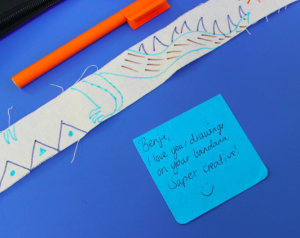Scenario:
Do you have students who are reluctant workers, rarely on task and difficult to motivate?
Do you have students who always work to the best of their ability, use their initiative and have a love of learning?
How do you provide positive feedback to every student during every lesson?
Become a ‘Roving Grandma’ and provide friendship, warm and cosy feelings, positive feedback, care and respect – just like grandmas do!
Roving is a powerful way to:
- Teach at the point of need
- Provide feedback
- Receive feedback
- Develop self- esteem
- Build relationships
Here’s 7 Things to accomplish while roving the classroom:
1. The Tick
Provide every student with tick/s as you rove. It’s instant feedback to confirm:
- Correct work
- Great effort
- You are on the right track
- You have achieved new learning
- Keep going
- I agree with you
2. The Comment – for feedback to students
- The Evaluation Comment to inform students of their achievements. I see you understand …, I am impressed with your understanding of … , You have nailed the skill of … , I can see evidence of … , You show a clear understanding of …,
- The ‘KAPOW’ Comment WOW, IMPRESSIVE, GREAT EFFORT, AMAZING – write the ‘kapow’ comment in capitals and colours. Reluctant workers thrive on a ‘kapow’ comment.
The Tick and The Comment are effective techniques to use with the reluctant students who need a big dose of motivation and acknowledgement to keep them on track. You only need to find one thing they have done to provide a tick or a comment. It releases endorphins and makes them feel good.
3. The Question – to gain feedback from students re knowledge and understanding
Tell me about…, What’s this? Tell me the process you used to get this answer, Why this answer? Justify why you believe this to be correct, How do you know this is correct?
4. Student feedback via I would like you to notice… ,
Student says, ‘ I would like you to notice…’. I want to tell you that… , I choose this idea because … ,
5. Tips Time
Provide a tip for anything that needs correcting. NOTE: The student must make the correction after you have provided the tip.
SAY: Here’s a tip re spelling … – select any word they have incorrectly spelt and teach right there, right now!
e.g. Here’s a tip re … sitting letters on the line, letter heights, clear readable writing, check this part, have another check of this equation, see this part, you have used the right strategy but need to do a recalculation. Provide tips for small errors that can be corrected straightaway – capital letter, punctuation, spelling.
Tip: Have a supply of erasers, it’s ok to allow students to erase the errors and redo. It locks in the learning.
6. Teach Now
Teach at the point of need, right here right now, never by pass something that you see students have incorrect. (Refer to Tips) Provide written or verbal feedback either before or after you have given a tip.
7. The Note
Feedback via a note, alternative to verbal. https://teachingfeather.com/notes-make-a-difference/

Writing notes to your students provides positive feedback that can be taken home and shared.
When to Rove?
- Every lesson
- While students are getting organised to begin the task.
- As students are working on the task
- To keep students on task
- To motivate and acknowledge achievement
How much time should you spend roving?
Observe, use your ‘teaching instincts’ and rove as often as you can. Reluctant workers need lots of quick feedback straight away.
Well done getting organised, I see you have your pencils ready, well done, I like the way you have started, great heading, I like your letter T. Focus on anything that they have started and praise the effort. Check the Grandma Technique strategy for more feedback statements.
If you have a focus group to work with call out feedback to students as they are working. That way they know you are still observing them, ‘with them’ and acknowledging their efforts.
Take a quick break from the Focus group to do a quick rove around, correcting and providing verbal and written feedback.
Outcomes:
- Students feeling great
- You gather knowledge about your students achievements
- Students learn at the point of need
- Building relationships between teacher and students